The simple act of labeling someone a high-potential employee changes our expectations of them and their view of themselves.
So you’re passionate about building an equitable company. You’re tracking the diversity in your applicant pipeline, measuring how applicants from different groups are rated in your interviews, and whether your candidate experience is consistent. You’ve taken a look at your critical hire rate for different groups. You’ve audited the promotion process to see if it’s fair. But what about your high-potential program?
High-potential programs can be very helpful for your company, just like the employees you choose for them. But they have some downsides, too. The simple act of labeling someone a high potential employee changes our expectations of them and their view of themselves. This is a risk for anyone looking to identify high potential employees equitably.
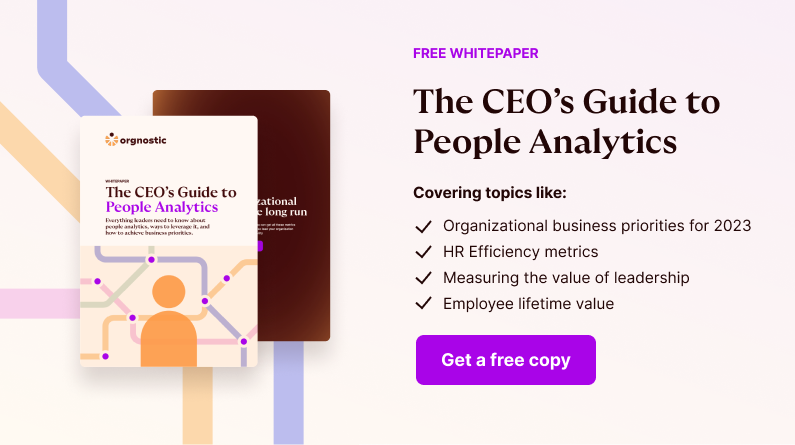
The first step is to figure out which employees are your top performers/high-potential employees. Let’s look at that from a demographic lens.
How do I calculate gender, ethnic, and age distributions?
To do this, we need to find the distribution or the level of diversity in your top performer/high-potential pool. Here’s how to do that for gender diversity, ethnicity, and age.
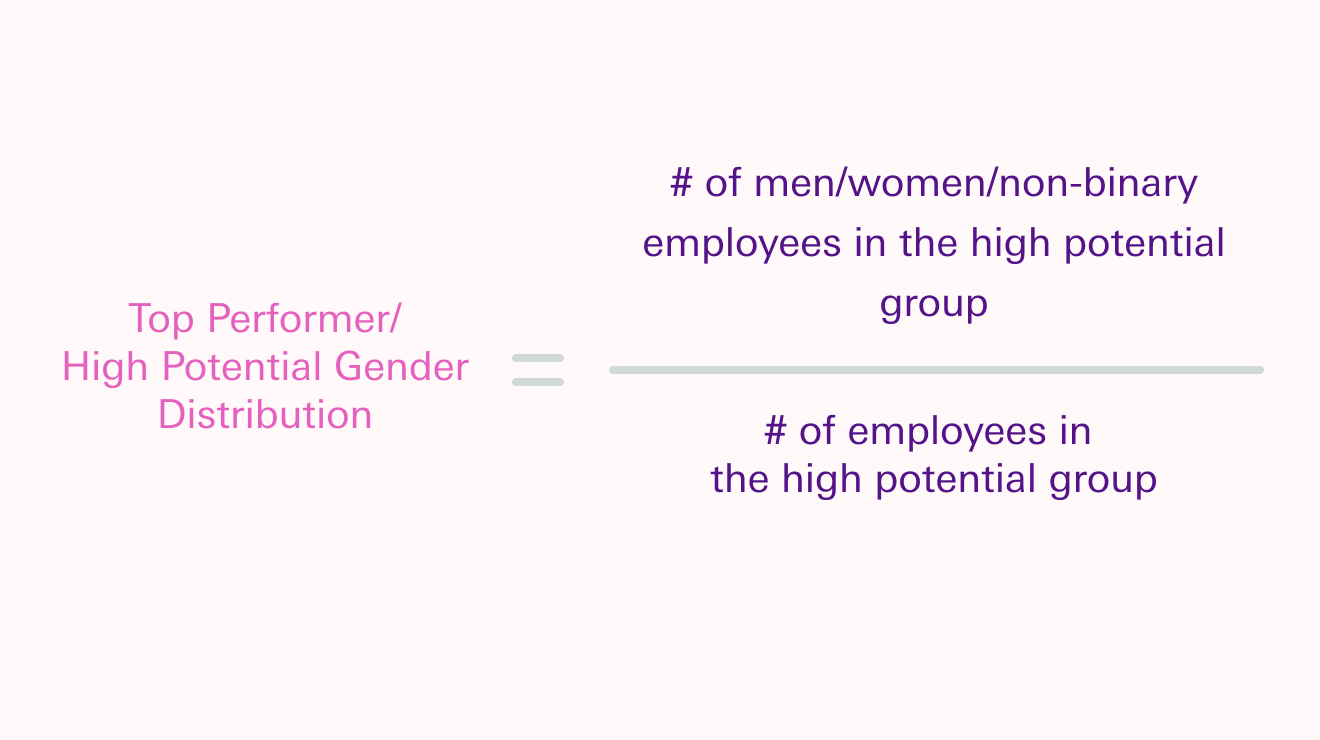
If the number of employees with top performer status is too small, you may not be able to compare many ethnicity groups accurately. As well, the base rate of some ethnicity groups may be very low in your company. Keep those overall breakdowns in mind when interpreting these numbers. Focus on whether some groups are over- or underrepresented, rather than their absolute numbers, to start.
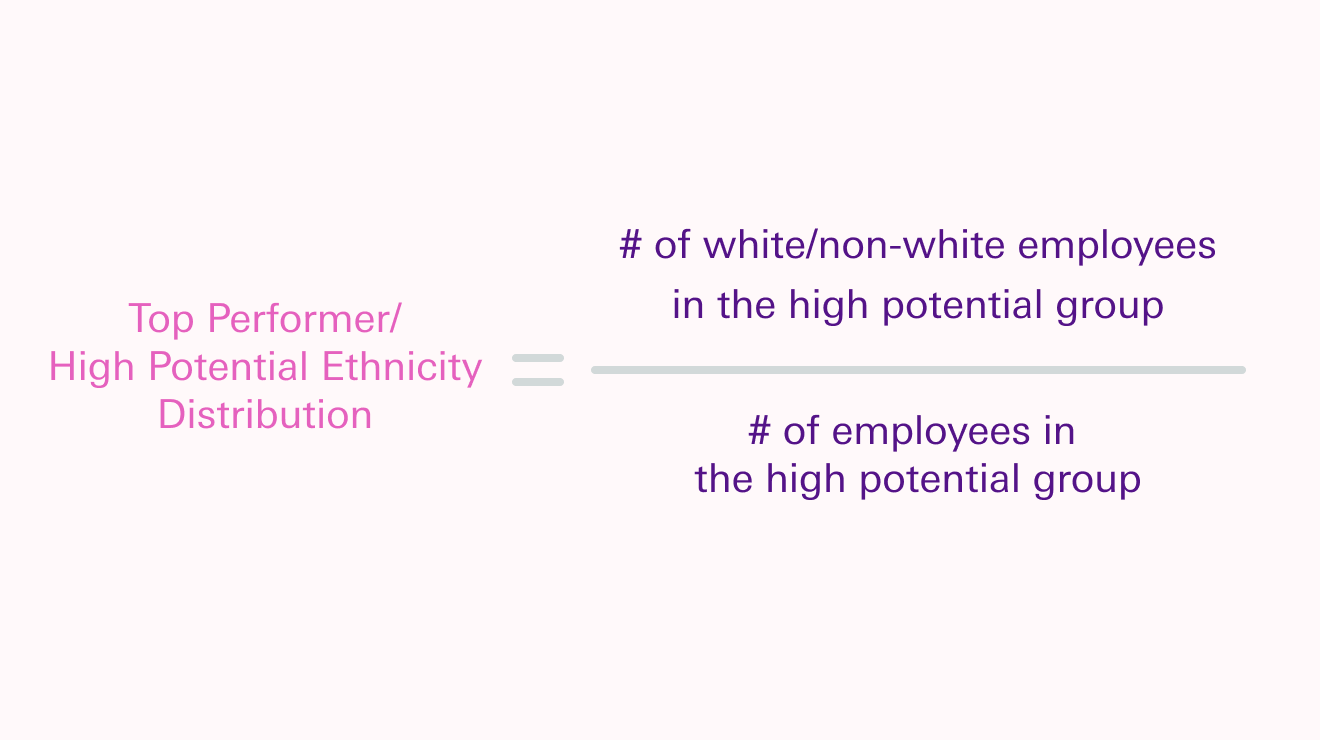
Keep in mind that age may be related to years of experience in your industry and the seniority of your roles. This might mean that older people are not in roles eligible for your high-potential program, because they are already more senior. To address this, you can look at the proportion of ages at each seniority level, and compare these metrics to your employee levels that are eligible for high potential status.
So What?
Congratulations! Now you know more about the breakdown of your top performers and high potential employees. This opens up many paths you can take, each with their own questions to answer. Here are some to get you started.
What is our company’s approach to talent?
You may not have explicitly talked about how your company views talent, but it’s worth at least one discussion to air out the assumptions you may be holding onto. You can think of approaches to talent on two dimensions: static vs dynamic and inclusive vs exclusive. The decisions you make about how much to invest in your employees, and who should get these investments, come from your talent approach. This image shows the four approaches to talent:
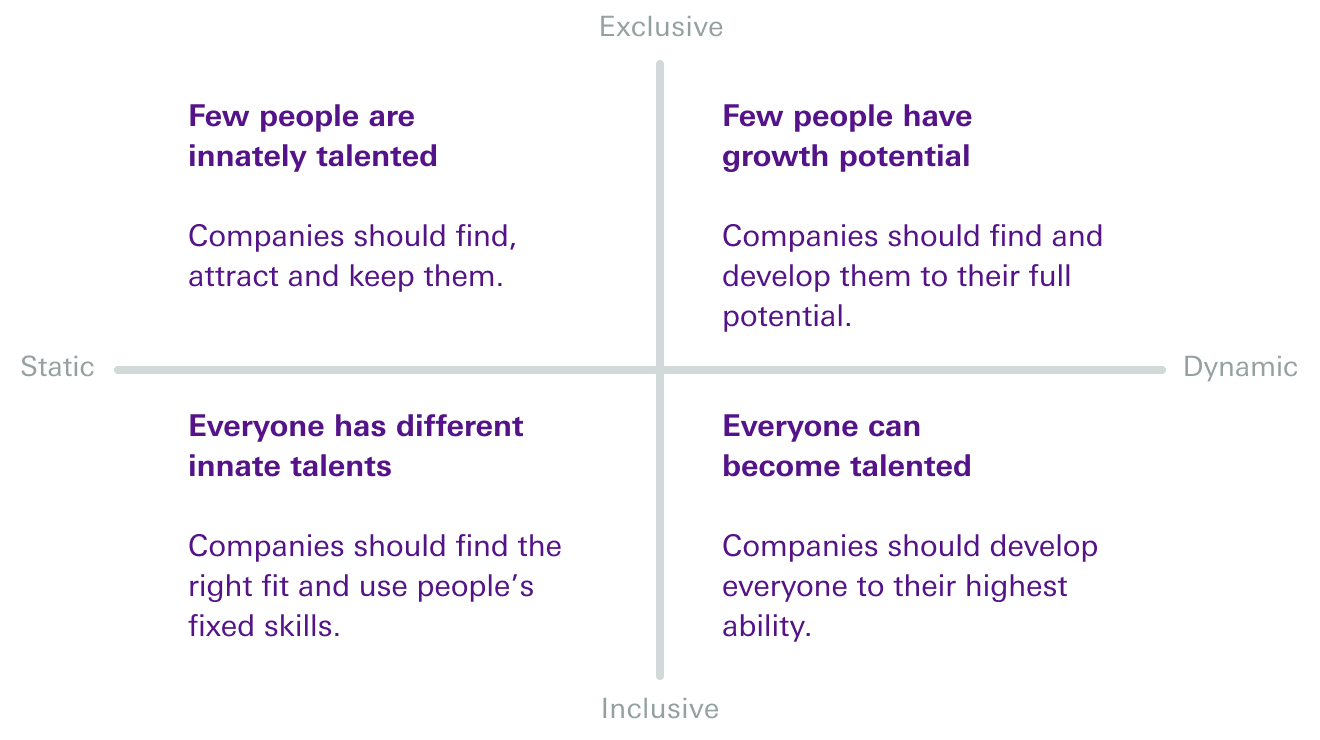
Are talented people getting the right opportunities?
Unfortunately, there are biases in who we think has potential. This affects our leadership and diversity through the characteristics that we think high potential employees share. We may not be giving truly talented people the chance to show their value in the organization, if we overlook them for less competent people who look like leaders.
Are we focusing on the right dimensions of potential and performance?
Too often, being visible and looking like we are working hard matters more than our actual performance. High potential programs that focus on the right dimensions can be more grounded in facts and less likely to get off course with office politics.
How do I answer this question in Orgnostic?
Answering this question will be easy. Answering the flood of questions it brings up won’t be!
Connect your HRIS app with Orgnostic platform and any performance management tools you’re using.
Then you can filter top performers and high potential employees by their characteristics to look for differences across the company.
From there, jump back to the “So What?” section above and you can start tackling those deeper questions.
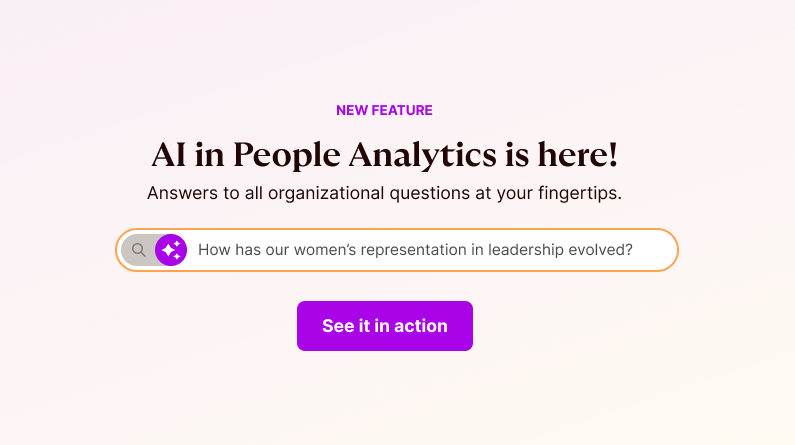
From the Diversity, Equity, and Inclusion series: